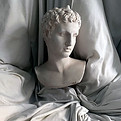
Relevance of classical realism in the 21st century
The renaissance of classical art today is not merely a revival of old forms but a vibrant reaffirmation of enduring artistic principles and values. It meets contemporary needs for beauty, skill, and cultural continuity while offering a compelling alternative to prevailing artistic trends. By embracing classical art, we reaffirm the power of aesthetic beauty, technical mastery, and timeless human expression in shaping our cultural landscape.

Preservation of Tradition
Classical Realism preserves and upholds the centuries-old traditions of classical art, ensuring that techniques and aesthetic values are passed down through generations. This continuity bridges past and present, enriching contemporary artistic expression with deep historical roots.

Contemporary Relevance and Innovation
It adapts classical techniques to address modern themes and contemporary issues. Classical Realism inspires artists to innovate within traditional frameworks, ensuring classical art remains relevant in today's art world.

Counterbalance to Modernist Trends
Classical realism provides a refreshing counterbalance in a climate often dominated by abstract, conceptual, or provocative art forms. It offers an alternative approach that values clarity, harmony, and beauty, inviting viewers to engage with art through aesthetic pleasure and contemplative reflection.

Reconnection with Humanistic Values
In an era often characterized by fragmentation and rapid change, classical realism provides a stable anchor, reminding us of our shared humanity and enduring ideals.
Return to beauty
In earlier times, art reflected the belief that humans, as God's creations, possess a divine origin and eternal existence. This belief offered hope and a profound sense of life's worth. Artists captured this perspective, finding beauty even in tragedy and depicting grand visions of human life.
Today, the postmodern sceptics, faced with a pragmatic and scientific worldview, lack hope for an eternal future. Humanity, living fleetingly and returning to the mud, grapples with cosmic insignificance, reflected in contemporary art. Many modern paintings seem hopeless because they no longer represent a divine nature; the end of man is seen as dust, not glory. Beauty and hope for eternity seem to have faded into a bygone era.
Yet, the desire for beauty, the capacity for self-reflection, and the longing for eternity are inherently human. We need beauty despite its perceived lack of function, as it impacts our well-being. Artists help us see surprising beauty in daily life, celebrating what might otherwise go unnoticed. They offer an intimate record of human life, allowing us to see through their eyes, thoughts, and emotions.
Despite appearances, we crave art that captures truth and remains powerful and beautifully relevant long past its creation. This art is not just pretty or hollow but captures astonishing beauty that heightens our senses and floods us with transforming thought and emotion.
In celebrating classical realism, we honour a tradition that encapsulates the profound beauty and truth of the human experience. Through this art, we find a glimpse of eternity, a whisper of something greater.
I invite you to be part of this movement in embracing and perpetuating this legacy, allowing the timeless beauty of classical realism to inspire and elevate our souls.
Origins of classical realism
Classical realism is a contemporary art movement rooted in the tradition of classical art forms, particularly from the Renaissance through the 19th century. It emphasizes a return to technical mastery, meticulous craftsmanship, and a profound narrative approach reminiscent of historical European art schools.

Technical Mastery
Classical realism prioritizes rigorous training in drawing and painting. Artists sharpen their skills in anatomy, perspective, proportion, and composition to achieve lifelike representations with precision and accuracy.

Narrative and Emotion
Classical realism focuses on storytelling and emotional resonance. Artists use their work to explore universal themes such as human experience, identity, myth, and historical events. This narrative depth allows viewers to connect intellectually and emotionally with the artwork.

Naturalism and Representation
The movement emphasizes naturalistic depiction of subjects, striving for faithful representation of the human form, landscapes, still lifes, and other subjects. This approach often involves detailed attention to light, shadow, texture, and atmosphere to create a convincing illusion of reality.

Aesthetic Beauty
Beauty in classical realism is derived from harmonious composition, balanced proportions, and refined craftsmanship. The goal is to evoke a sense of aesthetic pleasure and contemplation through visual elegance and symmetry.

